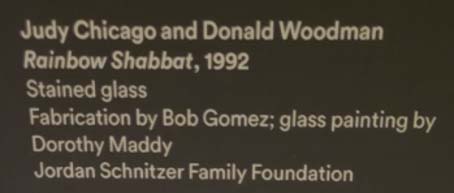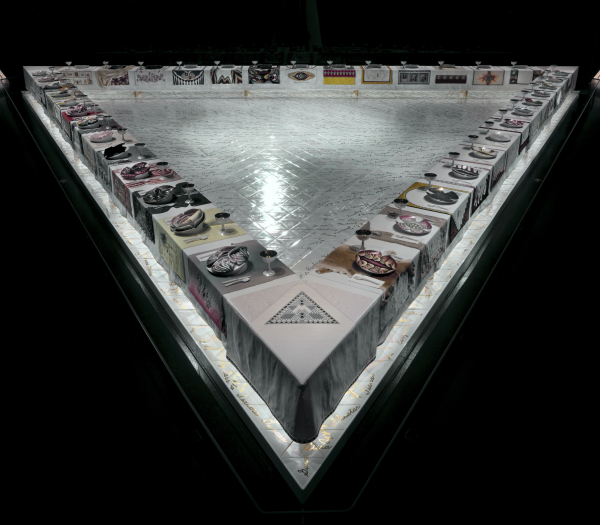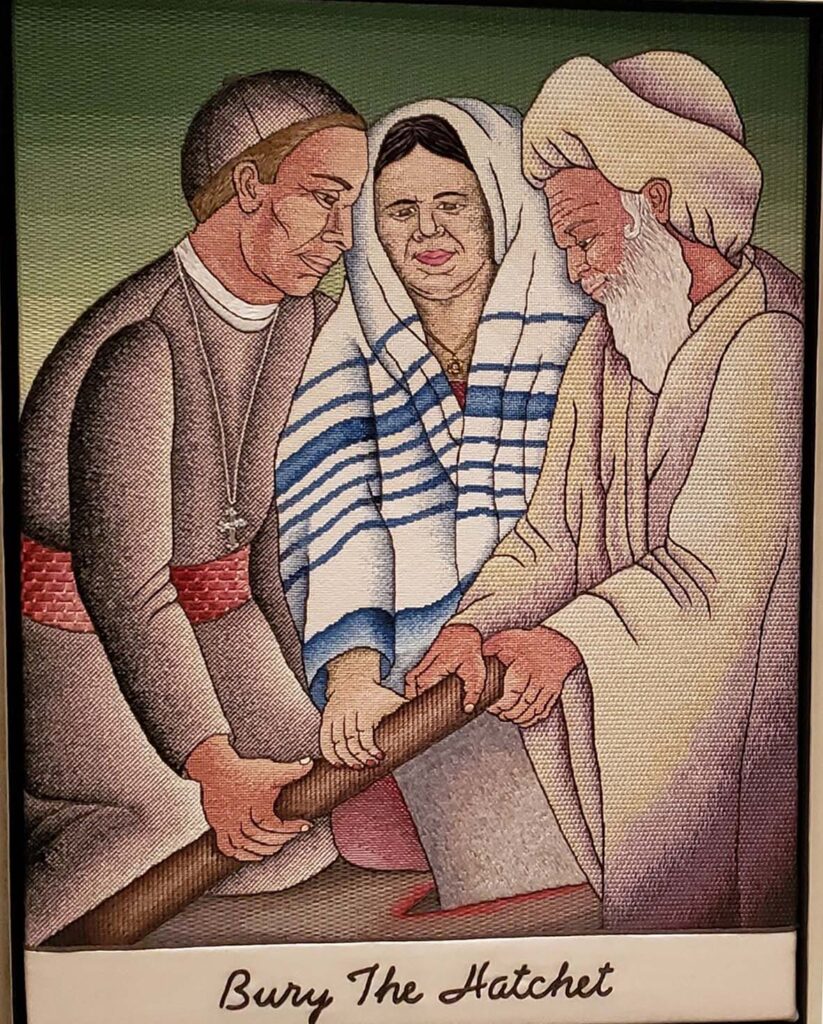By Lucy Komisar
Artist Judy Chicago is known for her feminist work “The Dinner Party” (1974-79), plates depicting women’s lives, on permanent exhibit at the Brooklyn Museum. Not as well known, but very pertinent now, a few decades later, she created another dinner, “Rainbow Shabbat,” challenging hostilities between religious partisans.
I visited a Judy Chicago retrospective at the New Museum in New York the other day. Born Judy Cohen in 1939 and raised in a progressive Jewish home, she changed her birth name out of a feminist desire not to carry the male name of the family and chose instead to be called after the city where she grew up.
She was not just an early second-wave feminist, but a supporter of peace and understanding between Jews, Catholics and Muslims.


Click photo to see larger version.
Looking at how her Jewish identity shaped her life and art was a focus of her Holocaust Project whose goal she saw as “nurturing our humanity, thereby creating a more peaceful, equitable world.”
A part of that is “Rainbow Shabbat” (1992), a stained-glass work which she created with her husband, Donald Woodman.
The major New Museum exhibit includes works by other women artists Judy Chicago selected.
“Bury the Hatchet” (2000) is painting, needlepoint, appliqué and embroidery on satin and needlepoint canvas by Lynda Paterson, Jane Thompson and Mary Ewanoski.
This is the iconic Dinner Party at the Brooklyn Museum.

The New Museum exhibit opened in October and runs till March 3, 2024.
The New Museum is in Manhattan at 235 Bowery south of Houston Street.
This article also on The Postil, a Christian magazine. And on Curator’s Choice.


